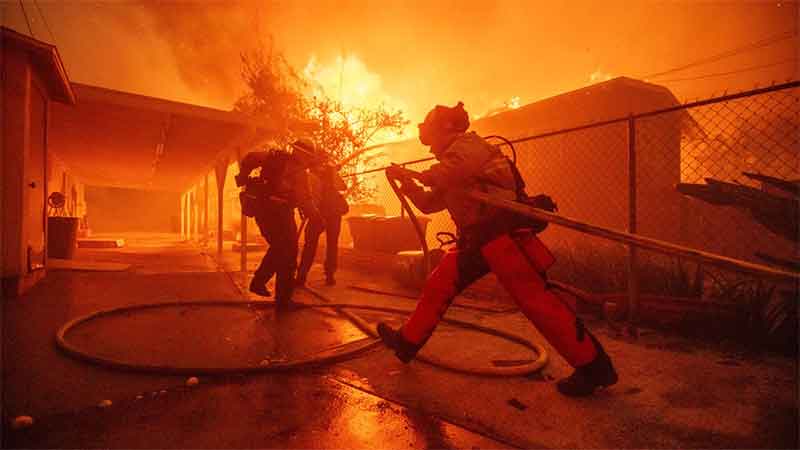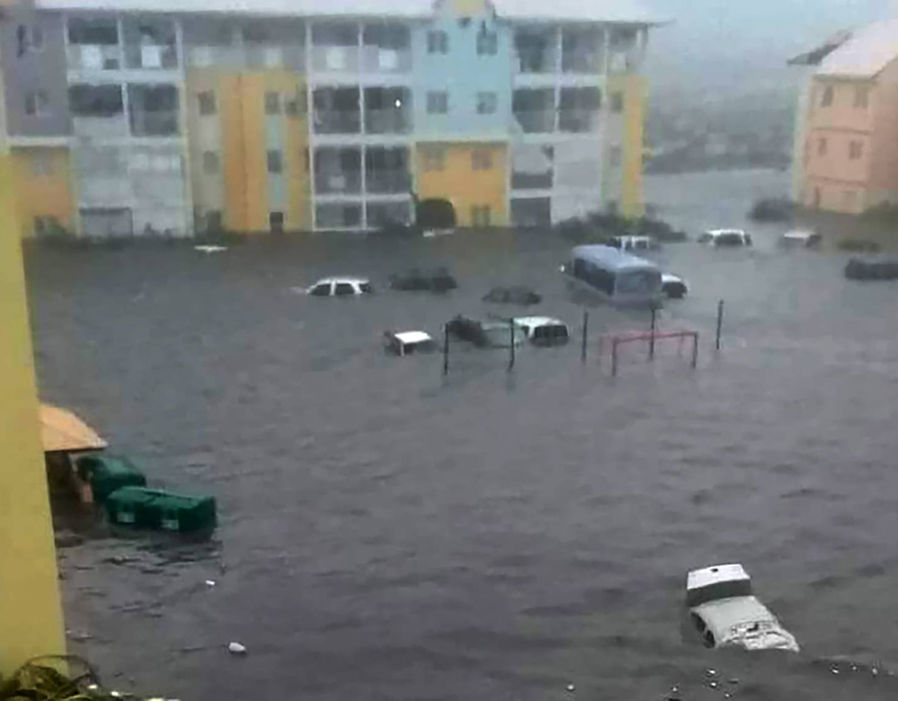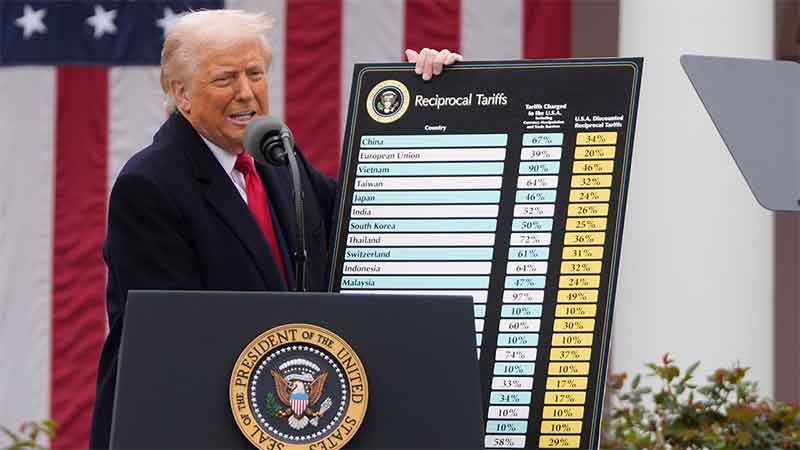
The 2015 Paris Climate Change Conference committed to ideally less than a plus 1.5 degree Centigrade (+1.5C) temperature rise, and to no more than a catastrophic +2C. The 2021 Glasgow Climate Change Conference committed to “net zero emissions by 2050”. However there is no decrease in our record greenhouse gas (GHG) pollution, gas, oil, and coal use, or cattle, cement, steel and iron ore production. We are surely doomed by remorseless inaction.
There is no decrease in our presently peak global production of coal and methanogenic cattle. The atmospheric carbon dioxide (CO2), nitrous oxide (N2O), and methane (CH4) are remorselessly increasing, as are oil and gas use. Greenhouse gas (GHG) producing cement, steel, and iron ore production are all increasing. Humanity should be radically decreasing these terracidal activities but, political rhetoric aside, is damning the planet through catastrophic global inaction. The biodiversity loss is increasing catastrophically with a species extinction rate (speciescide rate) that is 100-10,000 times greater than the background extinction rate. While the rate of deforestation has decreased 3-fold since 1980, and net re-afforestation of temperate forests is now occurring, the deforestation rate in tropical forests levelled out to an appalling 50 million hectares per decade over the last 2 decades. Unless something radical happens we are doomed, the planet is doomed, and Humanity and the Biosphere face decimation.
In vain the climate scientists and biologists report the worsening realities, and plead for action with increasing desperation. Nuclear weapons and climate change are the 2 key existential threats to Humanity and the Biosphere [1-3], and one of Humanity’s greatest minds, Stephen Hawking, in his last book succinctly stated our problem: “We see great peril if governments and societies do not take action NOW [my emphasis] to render nuclear weapons obsolete and to prevent further climate change” [3].
“Tackling climate change” means decreasing greenhouse gas (GHG) pollution, but the appalling reality is that tropical deforestation has remained constant and high for 2 decades, and GHG pollution is not decreasing from present peak levels in all other key areas. Yet the global political consensus of “net zero emissions by 2050” means total cessation by 2050 of GHG emissions in all key areas (with expensive atmospheric CO2 draw-down and CO2 sequestration to deal with unavoidable GHG pollution as in cement production).
Set out below are the carefully documented details of this appalling and terracidal failure in all key areas of greenhouse gas (GHG) pollution.
(1). Coal use is at a record level. There has been no decrease from the present peak global coal use. Global coal use in terms of energy output totalled 94.91 exajoules in 1998, then rose steadily to 158.46 exajoules in 2011, and has thence has remained at roughly this level (161.1 exajoules in 2021). Global economic downturn due to the Covid-19 Pandemic evidently caused a dip in coal consumption to 151.07 exajoules in 2020 [4]. Note that 1 exajoule is 1018 joules and 1 joule (J) is the energy released when an electric current of one ampere passes through a resistance of one ohm for one second, and is also 1 coulomb-volt (C.V),1 newton meter and 1 watt second. 1 kilowatthour is 3.6 megajoules, and 4.18 joules of heat energy are required to raise the temperature of 1g of water by 1°C . In chemistry 1 kilocalorie is defined as the amount of heat needed to raise the temperature of one kilogram of water by 1°C (4.18 kJ) [5]. Burning coal, using coal as a reductant in steel production, and heating limestone in cement production all generate CO2 [5]. Atmospheric CO2 is responsible for about 85% of global warming due to greenhouse gases (GHGs) [1].
(2). Oil use is increasing. Daily oil use in “millions of barrels of oil per day” was 74.106 (1998), grew to 97.747 (2019), and decreased to 88.746 due to the Covid-19 Pandemic (2020), but has rebounded, increasing to 94.088 (2021) [6]. Burning coal, oil, natural gas and carbon biofuels generates the greenhouse gas CO2 as well as toxic pollutants. About 9 million people die each year from the long-term effects of toxic pollutants from burning fossil fuels and other carbon fuels [1, 7-9].
(3). Natural gas production is increasing. Natural gas production has steadily increased in “billion cubic metres” from 2,100 (1990) to 4,200 (2021) with small downward blips in 2009 (the Global Financial Crisis) and 2020 (the Covid-19 Pandemic). Global natural gas production recovered after the Covid-19 Pandemic with a 4% increase in 2021 [10]. About 85% of natural gas is methane (CH4). In terms of Global Warming Potential (GWP), CH4 is 105 times greater than the same mass of CO2 as a greenhouse gas (GHG) on a 20 year time frame and taking aerosol impacts into account [1]. Methane leaks to the extent of 3.3% in the US (based on US EPA data) and as high as 7.9% for methane from “fracking” coal seams. Assuming a GWP of 105 for CH4, a 2.6 % leakage of CH4 yields the same greenhouse effect as burning the remaining 97.4% CH4. Using this information one can determine that gas burning for electricity can be much dirtier than coal burning greenhouse gas-wise (GHG-wise). While gas burning for power generates twice as much electrical energy than coal burning per tonne of CO2 produced (MWh/tonne CO2), and the health-adverse pollution from gas burning is lower than for coal burning, gas leakage in the system actually means that gas burning for power can be worse GHG-wise than coal burning depending on the degree of systemic gas leakage. Gas is dirty energy, and the current coal-to-gas transition simply means long-term investment in another carbon fuel, and delaying urgently required cessation of carbon fuel burning [11-14].
(4). Atmospheric carbon dioxide (CO2) is increasing. Global atmospheric CO2 increased from 338 ppm (parts per million) in 1980 to 416 ppm in 2022 [15]. Atmospheric CO2 derives from the burning of fossil fuels and other carbon fuels, and contributes about 85% of global warming. The long atmospheric half-life of CO2 means long-term global warming even if there is cessation of CO2 emissions now. Numerous scientists argue for a return to about 300 ppm CO2 for a safe and sustainable planet for all peoples and all species [1].
(5). Atmospheric CO2 equivalent (CO2-e) is increasing. The atmospheric CO2 equivalent (CO2-e, CO2-equ, CO2-equivalent) including other greenhouse gases (excepting water, H2O) is steadily increasing. Thus the atmospheric CO2 equivalent (CO2-e) of all greenhouse gases was 480 ppm in 2013, and reached 508 ppm in 2019 [16, 17]. According to the IPCC (2014): “About 450 ppm CO2-eq, likely to limit warming to 2°C above pre-industrial levels” [18, 19] but 478 ppm CO2-eq was already attained by 2013, and reached 508 ppm in 2019 [16, 17].
(6). Atmospheric methane (CH4) is increasing. Global atmospheric CH4 increased from 1.64 ppm in 1984 to 1.77 ppm in 2000, remained at 1.77 ppm until 2006 (possibly due to decreased swamp methanogenesis), and has thence increased at an ever-increasing rate to the 1.91 ppm in 2022 [20, 21]. Global warming is releasing CH4 from CH4-H2O clathrates in the Arctic, and also from bacterial methanogenesis in the warming Arctic tundra. It is estimated that 50 Gt of CH4 will be released from the East Siberian Arctic sea bed in coming decades. Now CH4 has a global warming potential (GWP) that is 21 times greater than that of same mass of CO2 on a 100 year time frame but is 105 on a 20 year time frame with aerosol impacts considered. On the latter basis 50 Gt CH4 x 105 Gt CO2 -equivalent Gt / Gt CH4 = 5,250 Gt CO2-equivalent or 9 times more than the terminal CO2 emissions budget left in 2015 for avoiding a catastrophic plus 2C temperature rise [1, 19]. If that were not bad enough, CH4 release from the Arctic involves a positive feedback loop: warming -> CH4 release -> more warming -> more CH4 release – a huge Arctic methane bomb threat [1, 21]. Already CH4 is bubbling out of the Arctic Ocean in huge patches, the Siberian tundra is pitted with huge craters from CH4 explosions, and a lighted match can set leaking tundra CH4 ablaze.
(7). Atmospheric nitrous oxide (N2O) is increasing. Global atmospheric N2O increased from 0.315 ppm in 2018 to 0.336 ppm in 2022 [22]. N2O derives from oxidation of man-made nitrogenous fertilizers that are used on a huge scale globally. The GWP for N2O is 298 on a 100 year time frame and 289 on a 20 year time frame [1].
(8). Global crude steel production is increasing. World crude steel production rose steadily from 1,650 million metric tons (Mt) in 2012 to 1,951 Mt in 2021 [23]. Manufacture of steel involves use of coal (carbon, C) as a reductant to reduce iron oxide (roughly FeO) to iron (Fe) with CO2 as the other product. However coal could potentially be replaced by using renewable energy-derived hydrogen (H2) as a reductant [1].
(9). Global annual usable iron ore production is increasing. Global annual usable iron ore production increased from 1,830 Mt (2006) to 2,200 Mt (2009), then fell to 1,870 Mt (2016), and then subsequently rose steadily to 2,600 Mt in 2021 [24].
(10). Global cement production is increasing. Global cement production has steadily risen from 1.39 billion tons (1995) to 4.4 billion tons (2021), and is increasing [25]. One notes that the world population has grown from 5.7 billion (1995) to 7.9 billion (2021) i.e. the growth in global cement production has outstripped population growth by a factor of 2.3. Thus the annual per capita cement production (tons per person per year) has increased from 0.24 (1995) to 0.56 (2021).
(11). World cattle numbers are slightly increasing. The number of cattle worldwide slightly increased from 1001.72 million (2012) to 1009.69 million (2022) [26]. Cattle have digestive processes involving methanogenic anaerobic bacteria, and expel methane (CH4) through eructation (belching). FutureFeed, a research company deriving from the Australian Commonwealth Science and Industrial Research Organisation (CSIRO) has found that beef cattle consuming a diet with less than 1% of the sea weed Asparagopsis show a reduction in methane production of more than 95% [27].
(12). Tropical deforestation remains huge in the 21st century. Decadal world deforestation has decreased 3-fold since the 1980s but levelled out at an appalling 50 Mha per decade in the 2000s and 2010s.There is some qualified good news in relation to deforestation. Decadal global deforestation decreased from 150 million hectares (Mha) in the 1980s to 78 Mha (1990s), 52 Mha (2000s), and to 47 Mha (overwhelmingly in the extraordinarily biodiverse tropics) in the last decade (the 2010s). Temperate forests have had a net gain since 1990 [28]. However the bad news is that deforestation appears to have levelled out at an appallingly high level of 50 Mha per decade in the last 2 decades. To put these numbers in context, the world lost 1.5 billion hectares of forest over the last 300 years (an area 1.5 times that of the US) [28]. The area of Sweden is 53 million hectares, and the area of Thailand is 51 million hectares. Forests represent a major carbon sink but are threatened with becoming net producers of CO2. A glimpse of what is being lost through the continued destruction of biodiverse tropical forests in Latin America, Africa and South East Asia is that the species extinction rate is now about 100-10,000 times greater than normal [29]. John Rafferty (2022): “Researchers estimate that the current rate of species loss varies between 100 and 10,000 times the background extinction rate (which is roughly one to five species per year when the entire fossil record is considered). In addition, a 2019 report by the Intergovernmental Science-Policy Platform on Biodiversity and Ecosystem Services noted that up to one million plant and animal species are facing extinction due to human activities” [29]. This catastrophic biodiversity loss in tropical forests means the potential huge loss of plant-derived bioactive chemicals as lead compounds for pharmacological development see my huge book “Biochemical Targets of Plant Bioactive Compounds. A pharmacological reference guide to sites of action and biological effects” [30].
Final comments.
Clearly, political rhetoric aside, some climate action is occurring e.g. more renewable energy and more electric vehicles. However the overall global performance remains disastrously poor: tropical deforestation has remained constant and disastrously high for 2 decades, and GHG pollution is simply not decreasing from the present peak levels in all the other key areas: atmospheric carbon dioxide (CO2), nitrous oxide (N2O), and methane (CH4) are remorselessly increasing, oil and gas use are increasing, greenhouse gas (GHG)-producing cement, steel, iron ore and cattle production are all increasing, and coal use remains at an all-time high. Indeed this latest picture may conceivably worsen due to the economic impacts of the continuing global emergencies of the Covid-19 Pandemic and the Russian invasion of Ukraine.
Climate criminal Australia provides a stark example of climate change inaction by a wealthy and resource-rich country. Thus Australia is among world leading countries in 16 areas of climate criminality, and ranks worst in the World for climate policy. Australia with 0.3% of the World’s population has Domestic plus Exported GHG pollution that is 5.4% of the World’s total. The new Australian Labor Government replaced an outright climate change denialist to effective climate change denialist Coalition Government in 2022, and has promised a modest decrease in Domestic GHG pollution, but it is committed to over 100 new coal and gas projects, and to massive coal, gas, iron ore and cattle exports [31]. I repeat what I argued 25 years ago in my book “Jane Austen and the Black Hole of British History”: if a resource-rich and wealthy country like Australia cannot respond properly to the climate crisis, what hope is there for the World? [32].
The global failure to act on Humanity- and Biosphere-threatening climate change will have appalling consequences. Thus it is variously estimated that in the absence of requisite action a worsening Climate Genocide about 10 billion people will die this century en route to a sustainable human population in 2100 of only about 1 billion [1, 33]. I concluded my huge book “Climate Crisis, Climate Genocide & Solutions” (2020) thus: “At the present plus 1.0-1.2 C the World is being savaged by deadly high temperatures and global warming-exacerbated droughts, floods, forest fires, high energy intensity tropical storms, sea level rise, storm surges, massive ecosystem loss and irreversible Biodiversity loss. A plus 1.5C is inevitable in the coming decade and in the face of remorselessly increasing CO2 and CH4 in the atmosphere one concludes that a catastrophic plus 2C is effectively unavoidable. Nevertheless we are inescapably obliged to do everything we can to make the future “less bad” for our children, our grandchildren and future generations” [1].
Our children and future generations will have to pay for Humanity’s appalling failure to act on man-made climate change that is set out above, and in recent years in even more comprehensive analyses [1, 34]. That failure is summarized above as a failure to decrease annual GHG emissions in 11 key areas. However the fundamental failure lies in refusal to recognize and apply a proper Carbon Price to GHG pollution. It has been expertly estimated from different approaches that the damage-related cost of GHG pollution is $200 per tonne of CO2-equivalent [1]. However the International Monetary Fund (IMF) has reported that the world average applied Carbon Price is a mere $2 per tonne of CO2-equivalent [35, 36]. I explained this to my grandchildren at a restaurant lunch: the restaurant owner gives us a bill for $200 but we say that we will only pay him $2.
Children get it. Children know that they will have to pay hugely for the mess we have bequeathed them [37]. Greta Thunberg has responded to the failure of adults to tackle climate change with an indignant “How dare you!”, and has responded to the dishonest climate rhetoric of climate criminal politicians thus: “Blah, blah, blah!” Carbon Debt is simply the damage-related cost of greenhouse gas (GHG) pollution that if not addressed now will inescapably have to be paid by future generations. However GHG emissions continue to rise inexorably and there is no global program to draw down CO2 and other GHGs from the atmosphere. While young people are now vociferously demanding massive climate action, the inescapable global Carbon Debt is $200- $250 trillion and increasing by $16 trillion each year. Unlike Conventional Debt that can be variously expunged by bankruptcy, printing money or default, Carbon Debt is inescapable – thus, for example, if sea walls are not built at gigantic expense, then cities, towns and arable land will be inundated [38, 39].
Climate criminal Australia has a Carbon Debt (in US dollars) of $5 trillion that is increasing at $400 billion per year and at $40,000 per head per year for under-30 year old Australians [39]. If you know the annual per capita GHG pollution for your country [40] you can readily estimate the annual increase in Carbon Debt for your country too. When young people appreciate these numbers there will be a children-led Climate Revolution (non-violent of course) [40]. Disproportionately GHG polluting countries are not just stealing from the young, they are also egregiously lying by their disingenuous rhetoric: increasing GHG pollution does not constitute “climate change action”. The planet is doomed unless massive climate change action is urgently undertaken. Disproportionately climate criminal corporations and countries must be urgently subject to rigorous penalties and global Boycotts, Divestment and Sanctions (BDS). The cost of greenhouse gas pollution must be fully borne by the polluters. Please inform everyone you can.
References.
[1]. Gideon Polya, “Climate Crisis, Climate Genocide & Solutions”, Korsgaard Publishing, 2020.
[2]. “Nuclear weapons ban, end poverty & reverse climate change”, 300.org: https://sites.google.com/site/300orgsite/nuclear-weapons-ban .
[3]. Stephen Hawking, “Brief Answers to the Big Questions”, John Murray, 2018.
[4]. Statista, “Coal consumption worldwide from 1998 to 2021”: https://www.statista.com/statistics/265507/global-coal-consumption-in-oil-equivalent/ .
[5]. “Joule”, Wikipedia: https://en.wikipedia.org/wiki/Joule .
[6]. Statista, “Oil consumption worldwide from 1998 to 2021”: https://www.statista.com/statistics/265239/global-oil-consumption-in-barrels-per-day/ .
[7]. “Stop air pollution deaths”: https://sites.google.com/site/300orgsite/stop-air-pollution-deaths .
[8]. Aaron J Cohen, Michael Brauer et al., “Estimates and 25-year trends of the global burden of disease attributable to ambient air pollution: an analysis of data from the Global Burden of Diseases Study 2015”,The Lancet, April 2017: http://thelancet.com/journals/lancet/article/PIIS0140-6736(17)30505-6/fulltext .
[9]. Jason Arunn Murugesu, “Pollution killed 9 million people worldwide in 2019 alone”, New Scientist, 17 May 2022: https://www.newscientist.com/article/2320777-pollution-killed-9-million-people-worldwide-in-2019-alone/ .
[10]. World energy & climate statistics, “Natural gas production”, 2021: https://yearbook.enerdata.net/natural-gas/world-natural-gas-production-statistics.html .
[11]. “Gas is not clean energy”: https://sites.google.com/site/gasisnotcleanenergy/ .
[12]. ”Gas is dirty energy”: https://sites.google.com/site/gasisnotcleanenergy/gas-is-dirty-energy .
[13]. Gideon Polya, “The lie that gas is “cleaner””, Green Left, 7 October 2020: https://www.greenleft.org.au/content/lie-gas-cleaner .
[14]. Gideon Polya, “Methane Leakage Makes Australia A World Leading Per Capita Greenhouse Gas Polluter”, Countercurrents, 18 February 2022: https://countercurrents.org/2020/02/methane-leakage-makes-australia-a-world-leading-per-capita-greenhouse-gas-polluter/ .
[15]. US NOAA, “Trends in atmospheric carbon dioxide”: https://gml.noaa.gov/ccgg/trends/global.html .
[16]. Bureau of Meteorology and CSIRO, “State of the Climate 2014”: http://www.bom.gov.au/state-of-the-climate/documents/state-of-the-climate-2014_low-res.pdf .
[17]. Bureau of Meteorology and CSIRO, “State of the Climate 2020”: file:///D:/Users/Gideon/Downloads/State-of-the-Climate-2020.pdf .
[18]. Gideon Polya, “International Consensus-Based IPCC Summary For Policymakers (2014) Downplays Acute Seriousness Of Climate Crisis”, Countercurrents, 12 November, 2014: https://www.countercurrents.org/polya121114.htm .
[19]. The IPCC, “Climate Change 2014 Synthesis Report, Approved Summary for Policy Makers”, 1 November 2014: http://www.ipcc.ch/pdf/assessment-report/ar5/syr/SYR_AR5_SPM.pdf .
[20]. US NOAA, “Trends in atmospheric methane”: https://gml.noaa.gov/ccgg/trends_ch4/ .
[21]. “Methane Bomb Threat”: https://sites.google.com/site/methanebombthreat/.
[22]. US NOAA, “Trends in atmospheric nitrous oxide”: https://gml.noaa.gov/ccgg/trends_n2o/ .
[23]. Statista, “World crude steel production from 2012 to 2021”: https://www.statista.com/statistics/267264/world-crude-steel-production/ .
[24]. Statista, “Production volume of usable iron ore worldwide from 2006 to 2021”: https://www.statista.com/statistics/589945/iron-ore-production-gross-weight-worldwide/ .
[25]. Statista, “Cement production worldwide from 1995 to 2021”: https://www.statista.com/statistics/1087115/global-cement-production-volume/ .
[26]. Statista, “Number of cattle worldwide from 2012 to 2022 (in million head)”, 2022: https://www.statista.com/statistics/263979/global-cattle-population-since-1990/ .
[27]. Australian Department of Climate Change , Energy, the Environment and Water, ” From beaches to burps: native Australian seaweed key to reducing methane emissions from cows”, 2021: https://www.dcceew.gov.au/climate-change/publications/from-beaches-to-burps-native-australian-seaweed-key-to-reducing-methane-emissions-from-cows .
[28]. Hannah Ritchie and Max Roser, “Deforestation and forest loss”, Our World in Data, 2020: https://ourworldindata.org/deforestation .
[29]. John P. Rafferty, “Biodiversity loss”, 21 September Britannica, 2022: https://www.britannica.com/science/biodiversity-loss .
[30]. Gideon Polya, “Biochemical Targets of Plant Bioactive Compounds. A pharmacological reference guide to sites of action and biological effects”, Taylor & Francis & CRC Press, 2003.
[31]. Gideon Polya, “Cowardly new Australian Labor Government fails on nuclear weapons, poverty & climate change”, Countercurrents, 6 July 2022: https://countercurrents.org/2022/07/cowardly-new-australian-labor-government-fails-on-nuclear-weapons-poverty-climate-change/ .
[32]. Gideon Polya, “Jane Austen and the Black Hole of British History. Colonial rapacity, holocaust denial and the crisis in biological sustainability”, G.M. Polya, 1998, 2008 (2022 edition being finalized).
[33]. “Climate Genocide”: https://sites.google.com/site/climategenocide/ .
[34]. Gideon Polya, “Extrapolating 11,000 scientists Climate Emergency warning to 2030 catastrophe”, Countercurrents, 14 November 2019: https://countercurrents.org/2019/11/extrapolating-11000-scientists-climate-emergency-warning-to-2030-catastrophe .
[35]. Gideon Polya, “Australia Rejects IMF Carbon Tax & Preventing 4 Million Pollution Deaths By 2030”, Countercurrents, 15 October 2019: https://countercurrents.org/2019/10/australia-rejects-imf-carbon-tax-preventing-4-million-pollution-deaths-by-2030/ .
[36]. International Monetary Fund (IMF), “Fiscal Monitor: how to mitigate climate change”. Executive Summary”, September 2019: file:///C:/Users/Gideon/AppData/Local/Temp/execsum-6.pdf .
[37]. Gideon Polya, “50 Reasons For Free University Education As We Bequeath The Young A Dying Planet”, Countercurrents, 19 March 2017: https://countercurrents.org/2017/03/50-reasons-for-free-university-education-as-we-bequeath-the-young-a-dying-planet/ .
[38]. Gideon Polya, “Inescapable $200-250 trillion global Carbon Debt increasing by $16 trillion annually”, Countercurreents, 27March 2019: https://countercurrents.org/2019/04/inescapable-200-250-trillion-global-carbon-debt-increasing-by-16-trillion-annually-gideon-polya/ .
[39]. “Carbon Debt Carbon Credit”: https://sites.google.com/site/carbondebtcarboncredit/ .
[40]. “Climate Revolution Now”: https://sites.google.com/site/300orgsite/climate-revolution .
[41]. Gideon Polya, “Revised Annual Per Capita Greenhouse Gas Pollution For All Countries – What Is Your Country Doing?”, Countercurrents, 6 January 2016: https://countercurrents.org/polya060116.htm .
Dr Gideon Polya taught science students at La Trobe University, Melbourne, Australia over 4 decades. He published some 130 works in a 5 decade scientific career, notably a huge pharmacological reference text “Biochemical Targets of Plant Bioactive Compounds”. He has also published “Body Count. Global avoidable mortality since 1950” (2007, 2022) and “Jane Austen and the Black Hole of British History” (1998, 2008). He has recently published “US-imposed Post-9-11 Muslim Holocaust & Muslim Genocide” (2020), and “Climate Crisis, Climate Genocide & Solutions” (2020). For images of Gideon Polya’s huge paintings for the Planet, Peace, Mother and Child see: http://sites.google.com/site/artforpeaceplanetmotherchild/ .












































